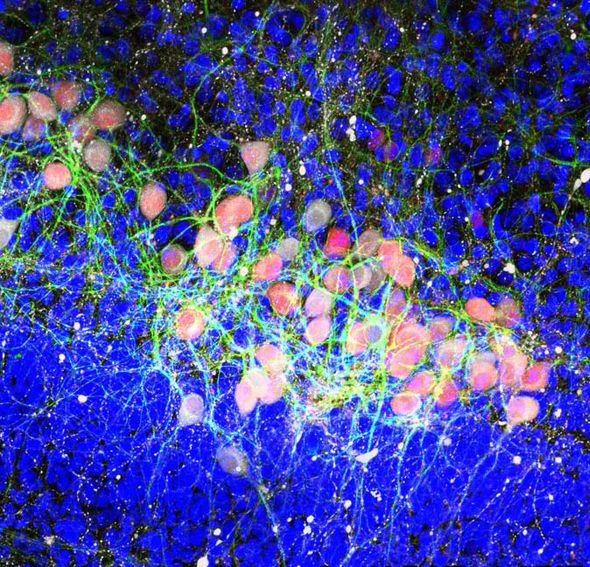Researchers Capture Stunning Images of Brains Affected by Parkinson’s
Parkinson’s Disease (PD), a neurodegenerative disease, is characterized by tremors, muscular rigidity and slow, imprecise movements. Brain cells situated in the substantia nigra area of the brain produce dopamine, a chemical that communicates messages between the substantia nigra and other brain regions to control body movements. In PD, neurodegeneration occurs when these specific brain cells in the substantia nigra are damaged and do not produce enough dopamine, leading to uncontrolled movements and shakes. Parkinson’s UK recently organized a competition called “Picturing Parkinson’s” in remembrance of Dr. Jonathan Stevens, who had passed last December from PD.
“Beautiful images like ‘Waterlillies’ would be at home in the Tate, but are in fact the product of tireless researchers working to unpick what’s going awry in the hundreds of millions of nerve cells to cause people to develop Parkinson’s,” said Dr. Arthur Roach, Research Director at Parkinson’s UK. “As well as being visually arresting, the images give us unique insights into how we could intervene and stop Parkinson’s, or even prevent the condition in the first place.”
Brian Stevens, Dr. Steven’s father, judged the pictures with his family. “Jonathan would be honored that this competition was held in his memory,” he commented. “He was an avid supporter of Parkinson’s research, and communicating its progress to inspire other people with Parkinson’s.”

First place was awarded to “Nerve Superhighway” by Rowan Orme of the University of Keele. The green branch-like objects in the picture are axons, which facilitate communication between areas of the brain. These are the connections that break down in Parkinson’s.
Second place went to ‘Waterlillies’ by Nicola Drummond of Edinburgh University. The bright pinks and green show the protein, Alpha-sinuclein, which builds up in a brain with Parkinson’s.
 Dr. Amy Reeve photographed mitochondria, which are the “batteries” of our cells, providing us with energy.
Dr. Amy Reeve photographed mitochondria, which are the “batteries” of our cells, providing us with energy.
 Heather Booth captured this image, entitled “Purple Haze”.
Heather Booth captured this image, entitled “Purple Haze”.
View the top 10 photos from the Picturing Parkinson’s image competition here.
Sources
Picturing Parkinson’s: Beauty in Our Brains Revealed
“What Is Parkinson’s Disease?” National Parkinson Foundation. N.p., n.d. Web.



